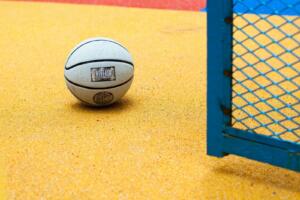Table of Contents
Netball is a great sport that demands strong teamwork, strategic thinking, and a deep understanding of the roles each player fills. With seven distinct netball positions on each team, players must be aware of their responsibilities and the areas of the court they are allowed to play on. Regardless of whether you are playing in a match, coaching a team, or following the game from the sidelines, having a clear understanding of each netball position’s purpose and movement is important. Mastering these roles helps players perform at their best and contributes to the overall effectiveness of the team.

Understanding the Netball Court
A standard netball court is 30.5 metres long and 15.25 metres wide, divided into three main sections: the centre third, the attacking third, and the defensive third. The centre third is where play starts and restarts. The attacking third is where teams aim to score, and the defensive third is where they try to stop the other team from doing the same. At each end of the court, there’s a goal circle (with a radius of 4.9 metres) where only the Goal Shooter (GS) and Goal Attack (GA) are allowed to take shots at the goal.
Netball Playing Positions
Netball positions each have their own role, and players need to know where they can go on the court and what their job is.
Defensive Netball Positions
For the defensive netball positions, the Goal Keeper (GK), Goal Defence (GD), and Wing Defence (WD) work together to stop the opposition from scoring. The GK stays close to the goal circle and is focused on marking the opposing Goal Shooter, making sure they don’t get a chance to shoot. The GD operates in the same area, but they mark the Goal Attack and do their best to stop passes from reaching the shooting area. The WD plays further out, working to intercept passes and disrupt the flow of the attacking team.
Centre and Wing Netball Positions
In the middle of the action, the Centre (C), Wing Attack (WA), and Wing Defence (WD) are all about keeping the game flowing. The Centre is the one who moves between all three thirds, making sure the team transitions between attack and defence smoothly. The WA plays a key role in driving the attack, feeding the ball into the circle, and creating chances for the team to score. The WD also plays in the middle area, but they are focused on blocking the opposition’s WA and making sure they don’t get easy passes into the circle.
Attacking Positions
On the attacking side, the Goal Shooter (GS), Goal Attack (GA), and Wing Attack (WA) are responsible for creating and converting scoring opportunities. The GS stays close to the post, waiting for the ball to come in so they can take high-percentage shots. The GA operates just outside the goal circle, using their speed and positioning to receive passes and score goals when needed. The WA is the one who feeds the ball into the goal circle, helping to create chances and maintain possession in the attacking third.
Each one of the netball positions is important in its own way, and teamwork between these roles is what makes a successful team. Whether you’re playing defence, attack, or in the middle, communication and knowing your role is crucial to the game.
Netball Rules and Gameplay
Netball is played in four 15-minute quarters, and the aim is to score more goals than the opposing team. There are a few rules that players must follow to keep the game fair and flowing smoothly. Here are some of the most important ones:
- Players can’t lift or move their landing foot before passing or shooting.
- Players must pass the ball within three seconds of getting it.
- Players are restricted to certain areas of the court, and stepping into an area where they shouldn’t be results in an offside penalty.
- When contesting a pass or shot, defenders must keep a distance of 0.9 metres from the player with the ball; if they don’t, it’s called obstruction.
- Contact happens when a player physically interferes with an opponent, like pushing or holding them, and it results in a free pass for the other team.
Common Penalties and Infractions
In netball, the umpire is responsible for enforcing the rules and ensuring fair play. Some of the most common penalties include obstruction (not keeping the required 0.9-metre distance), contact (any physical interference with an opponent), and offside (stepping into an area you’re not allowed to be in). If a player commits an infraction, the other team gets a free pass or penalty pass, and the umpire might issue a warning or suspend a player in more serious cases.
Mastering Your Position
To really excel in the game, players need to develop awareness of their own netball positions, communicate well with teammates, and keep improving their skills. Defenders need to focus on reading the game, staying disciplined, and contesting passes without breaking the obstruction rule. Attacking players should work on their movement, positioning, and accuracy when passing to help create scoring opportunities. Midcourt players need to be able to do a bit of both, balancing defence and attack, and making sure the team transitions smoothly between the two.
Teamwork is the key to success in netball. When every player understands their role and works together, the team is more likely to perform well on the court.
Conclusion
Netball is a team sport, and every one of the netball positions has an important job to do. Regardless of whether you’re defending, attacking, or helping out with the transitions, knowing your role and understanding the rules will help you play better and work more effectively with your team. Developing your skills and being aware of the game’s flow are key to success. When everyone works together and plays to their strengths, the team will have a big advantage.





